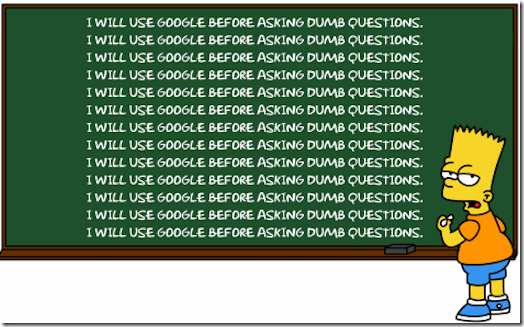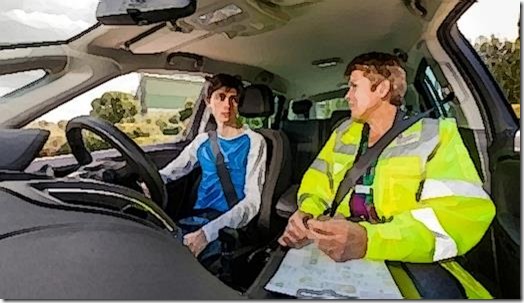 In April, I reported that the driving test will change from 4 December 2017. I won’t go into the details again – you can read them in the earlier article – but DVSA has published the amended Show Me, Tell Me (SMTM) questions on the GOV.UK website that it plans to use from December (the questions which are currently in use are available here).
In April, I reported that the driving test will change from 4 December 2017. I won’t go into the details again – you can read them in the earlier article – but DVSA has published the amended Show Me, Tell Me (SMTM) questions on the GOV.UK website that it plans to use from December (the questions which are currently in use are available here).
The only real difference to the SMTM questions is that, from December, some of them will be asked while the candidate is driving.
As an aside, I had someone on test recently, and the examiner asked him to show how he would clean the windscreen if it was dirty. My pupil duly operated the front washers, at which point the examiner added: “how about the back one?” Sneaky! He demonstrated it, but that’s one of the new questions.
Anyway, I have some misgivings about asking questions on the move, since they will require additional multitasking by the candidate. I’ve got more than a couple who have a job monotasking as it is. I think I mentioned this a while back, but one of my current lot has a ball stud in her upper lip, which she is wont to fiddle with while she’s driving (well, she doesn’t anymore, as a result of the story I’m about to relate). On one particular lesson, we were turning right at a mini-roundabout. Given that roundabouts are her main nemesis, and that she had applied almost full lock to turn right in this instance, you would think that, when the ball fell off her stud at the precise moment she needed to steer back into the target road, she would prioritise her steering and not, for example, a headlong dive into the foot well to try and catch the ball. I expected the first option. She chose the second. I think I screamed.
The one particular question that seems to be winding up a lot of instructors out there is the one about testing the horn. The current question, asked at the start of the test whilst stationary, is:
Show me how you would check that the horn is working
From December, it will be asked on the move, and will take the form:
When it’s safe to do so, can you show me how you’d operate the horn?
This is getting a lot of ADIs into a tizzy, because they don’t understand the Highway Code or associated rules properly.
The Highway Code says:
Rule 112
The horn. Use only while your vehicle is moving and you need to warn other road users of your presence. Never sound your horn aggressively. You MUST NOT use your horn
- while stationary on the road
- when driving in a built-up area between the hours of 11.30 pm and 7.00 am
except when another road user poses a danger.
Law CUR reg 99
Let’s clarify what this means. This is the only part covered by the MUST NOT (i.e. there is an actual law):
You MUST NOT use your horn
- while stationary on the road
- when driving in a built-up area between the hours of 11.30 pm and 7.00 am
except when another road user poses a danger.
I’ve actually seen someone quote that section minus the two bullet point conditions, and proffer it as evidence that DVSA is wrong. They’re actually suggesting that it says “You MUST NOT use your horn except when another vehicle poses a danger”. Sometimes, I’m almost at a loss for words – then I remember the blog, and I’m not anymore. That is not what it says, and it is not what it means. And the rest of Rule 112 is completely advisory.
A private car park, your driveway, your garage, etc. are not “on the road”. The test centre car park is not “on the road”. If it was, how on earth could you ever legally test the damned thing to see if it was working?
Now, if you look up CUR reg 99, the prohibited time period of 11.30-07.00 specifically refers to being “in motion” and on a “restricted road” (i.e one which has anything other than NSL assigned to it). So you are not breaking any law if you sound the horn on your driveway, etc. during that time period (or if you’re on an NSL road). You’d be a complete arsehole if you did it needlessly, but you are not breaking this law or Rule 112. There is absolutely nothing in CUR reg 99 or Rule 112 which says you can’t test the horn while you are driving during the day, or if you’re on your driveway, in your garage, or in a private car park – at any time. Common sense dictates that you shouldn’t do it if it going to confuse or annoy people, and although it is frowned upon to use the horn “aggressively”, even this does not go against CUR reg 99 or Rule 112 as far as any laws go.
What it boils down to is that examiners are not going to be doing anything wrong if they ask candidates to demonstrate the horn safely on their tests whilst driving along. The SMTM wording doesn’t state explicitly that the horn has to actually be sounded, either. It says “show me how” – and that could easily amount to a miming action, which most pupils seem to go for by default when asked, in my experience (even if they sound it, they do it as though it is going to bite them and it gets a brief “pap”). After 4 December, if someone tries to test it by giving it a 10-second burst, that would reflect very badly on their instructor in my opinion, as it already appears that some are preparing to make these changes as painful as possible to everyone concerned in order to register their protest.
All of mine are going to be taught as follows when we cover this:
If the examiner asks you to show him how you would test the horn, I want you to explain how you would do it and point to the bit of the steering wheel you would push. Ask him if he’d like you to actually do it. If he says yes, give it a quick toot if you think it’s safe to do it. DON’T do it on a bend, at a junction, or while there are pedestrians and other cars around.
And we will practice that during lessons, as we will the other on-the-move questions.
I think the problem with some ADIs out there is that they have been conditioned over many years of misunderstanding the rules to believe DVSA is breaking the law. Newer ADIs are naïve, eager to jump on the anti-DVSA bandwagon, and were probably trained by people who have these misunderstandings to start with, thus perpetuating the confusion. It would make life a whole lot simpler if they all just acknowledged their error and got on with the job instead of trying to defend the indefensible.
Remember the KISS principle. If it was absolutely forbidden to use the horn on the move, the rules would state this explicitly and unambiguously. They do not do so.
As I said earlier, I have misgivings about these SMTM changes just because I know that some of my pupils – past and present – would likely try to drive into a field as they shifted their entire focus from the road to the switch, dial, or button in question (some of them even try that when they see another vehicle, a dog or cat, a pigeon, or some other distraction for too long). I’m worried – perhaps needlessly – that some are potentially flaky enough to fall back to that when under pressure (and I’ve been proven wrong on many occasions, so it’s probably me). On the other hand, it provides a valuable teaching topic on lessons to make them able to do it properly.
Looking at it pragmatically, if someone can’t drive and operate the very controls they will need in the circumstances they will likely encounter when they pass their tests, they shouldn’t be on the roads. If they can’t do it safely on their tests after December, they won’t be. And that’s good.
 I must admit that wasn’t aware this was being looked into, but from today the Theory Test is changing slightly to make it “more accessible”.
I must admit that wasn’t aware this was being looked into, but from today the Theory Test is changing slightly to make it “more accessible”. Last December (2017), the driving test was changed to include use of a satnav, and two of the harder manoeuvres were replaced with two that my cat could do. From June 2018, learners will – at long last – be allowed to take lessons on motorways (with an instructor, and not with mum, dad, or best mate Kyle/Kylie).
Last December (2017), the driving test was changed to include use of a satnav, and two of the harder manoeuvres were replaced with two that my cat could do. From June 2018, learners will – at long last – be allowed to take lessons on motorways (with an instructor, and not with mum, dad, or best mate Kyle/Kylie). Various alerts from DVSA over the last week. These are
Various alerts from DVSA over the last week. These are 
 Look at the date this was first published! It’s an old, old post! CCL definitely IS part of the Part 3 test in 2019.
Look at the date this was first published! It’s an old, old post! CCL definitely IS part of the Part 3 test in 2019.

 In April, I reported that
In April, I reported that  I saw a discussion about this on a forum. It was to do with terminated tests and “what happens next?”
I saw a discussion about this on a forum. It was to do with terminated tests and “what happens next?”